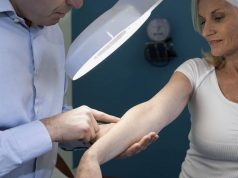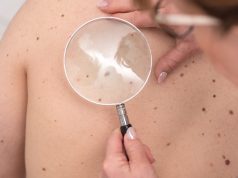Patient-centered methodology-generated probabilities better identify patients eligible for sentinel lymph node biopsy than those generated by conventional logistic regression analysis
By Elana Gotkine HealthDay Reporter
WEDNESDAY, May 3, 2023 (HealthDay News) — A patient-centered methodology (PCM) approach outperforms conventional analysis for predicting which melanoma patients would have a positive result on sentinel lymph node biopsy (SLNB), according to a study published online April 19 in JAMA Network Open.
James R. Miller III, Ph.D., from the California Pacific Medical Center and Research Institute in San Francisco, and colleagues conducted a hybrid prognostic study/decision analytical model among patients with melanoma who were eligible for SLNB at two melanoma centers in Australia and the United States. A comparison was conducted for the individualized probabilities of SLNB positivity generated by a PCM and those generated by conventional multiple logistic regression analysis examining 12 prognostic factors.
The simulation included 2,349 patients eligible for SLNB who did not undergo the procedure. The researchers found that the PCM-generated probabilities achieved an area under the receiver operating characteristic curve (AUROC) of 0.803 and 0.826 for predicting SLNB positivity in the Australian and U.S. cohorts, respectively, which was higher than the corresponding AUROCs generated by conventional logistic regression analysis. A minimally acceptable PCM-generated probability of 8.7 percent elicited the same number of SLNBs as historically performed, with 29.3 percent positive, representing an improvement of 287 additional positive SLNBs (38.6 percent improvement). Adopting a PCM-generated minimum cutoff probability of 23.7 percent resulted in performing 1,815 fewer SLNBs than the actual experience (49.9 percent), yielding the same expected number of positive results, for a positivity rate of 42.7 percent.
“Beyond SLNB for melanoma, results of this hybrid prognostic study/decision analytical model study may have important implications for how guidelines are developed for selecting patients to undergo other useful medical procedures,” the authors write.
Several authors disclosed financial ties to the pharmaceutical industry.
Copyright © 2023 HealthDay. All rights reserved.








